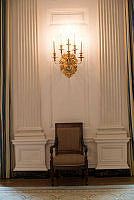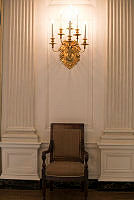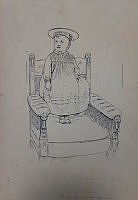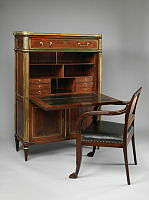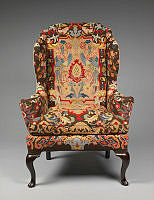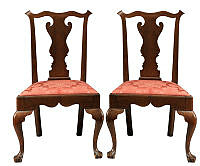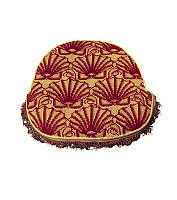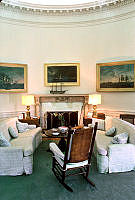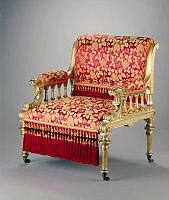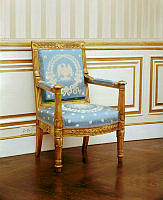State Dining Room, Donald Trump Administration
This photograph of the decor details in the State Dining Room was taken by Matthew D'Agostino on July 20, 2017, during the Donald Trump administration. The State Dining Room is located on the State Floor of the White House. The room is often the setting for State or Official Dinners and is the second largest room in the White House. In 2015, refurbishment of the room, a three year project overseen by First Lady Michelle Obama, was completed. Among the improvements made to the room were 34 mahogany chairs, including the one seen here, inspired by chairs purchased by President James Monroe for the East Room in 1818; peacock blue and ecru striped silk window treatments; and a custom, woven rug with a motif of wreaths and maple leaves inspired by the plasterwork on the room's ceiling.

